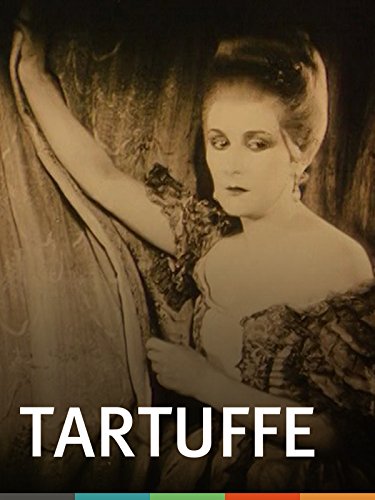In the 1920s, German filmmaker Fritz Lang was one of the most popular filmmakers in the world.
He made movies with heroes like Dr. Mabuse, who are still discussed on a regular basis today.
But there was another filmmaker who had an equally important impact on cinema during this period: F.W. Murnau.
F.W. Murnau (1888-1931) was a German filmmaker who is best known for his work on Sunrise, one of the first feature-length films shot in Hollywood.
Murnau was born in 1889 in Lubeck, Germany and studied art in Munich and Vienna before moving to Paris after World War I broke out.
He made his first film there, The Last Laugh (1924), which was not released until 1936 because of its risqué nature.
His second film there, City Girl (1928), was also banned because of its graphic sexual content.
Who Is F.W. Murnau?
In 1925, Murnau moved to Los Angeles where he worked on silent movies before directing one of his great films, Sunrise (1927).
Best F.W. Murnau Films
Murnau’s early films were known for their technical innovations and artistic style. He is credited with inventing a camera that could track actors’ movements, and he was also a pioneer in using film stock with high contrast ratios to capture more detail in his shots than previous filmmakers had been able to achieve.
Murnau’s first film after leaving Germany was Nosferatu (1922), based on Bram Stoker’s novel Dracula.
The film stars Max Schreck as Count Orlock, who is a vampire that hunts down young women to drink their blood before killing them; it was also his first film to be shot in color.
Nosferatu is often considered one of the best horror films ever made, and it helped establish Murnau’s reputation among moviegoers around the world.
1. Sunrise (1927)
Sunrise is a cinematic masterpiece that still holds up today as a stunning example of early silent cinema.
Directed by F.W. Murnau, this film tells the story of a farmer who is tempted by a city woman to murder his wife and run away together.
The film is visually stunning, with beautiful shots of the countryside and the city that are both realistic and dreamlike.
The performances from the cast are also excellent, with George O’Brien and Janet Gaynor delivering powerful performances that will stay with you long after the credits roll.
The film’s score is also worth mentioning, as it perfectly complements the action on screen and adds to the overall emotional impact of the story.

- Amazon Prime Video (Video on Demand)
- George O'Brien : The Man, Janet Gaynor : The Wife, Margaret Livingston : The Woman From the City...
- F.W. Murnau (Director) - Carl Mayer (Writer) - William Fox (Producer)
- English (Playback Language)
- English (Subtitle)
2. The Last Laugh (1924)
The Last Laugh is a silent film that tells a poignant story of a proud hotel doorman who loses his job and with it, his sense of self-worth.
The film is a masterpiece of German expressionism, directed by the legendary F.W. Murnau, and features an outstanding performance by Emil Jannings.
The movie is a visual feast, with Murnau’s use of camera angles and lighting creating a hauntingly beautiful atmosphere that perfectly captures the emotional turmoil of the protagonist.
The film’s themes of aging, class, and the human condition are explored with a deft touch, making it both timeless and relevant.
The Last Laugh is a silent film, but the lack of dialogue is more than compensated for by the exquisite orchestral score, which heightens the emotional impact of the scenes.
The film’s climactic sequence, in which the doorman experiences a moment of redemption, is one of the most powerful moments in cinema history.
- Amazon Prime Video (Video on Demand)
- Emil Jannings, Maly Delschaft, Max Hiller (Actors)
- F. W. Murnau (Director) - Carl Mayer (Writer) - Erich Pommer (Producer)
- English (Playback Language)
- English (Subtitle)
3. Tabu: A Story of the South Seas (1931)
Tabu: A Story of the South Seas is a stunning piece of cinematic artistry that transports the viewer to a world of lush landscapes and ancient cultures.
Directed by F.W. Murnau, the film tells the story of two young lovers caught in the crosshairs of tradition and modernity.
The breathtaking cinematography captures the beauty and mystery of the Polynesian islands, setting the stage for a story that is both romantic and tragic.
The performances of the non-professional actors are raw and authentic, imbuing the film with a sense of realism that only adds to its power.
The film’s exploration of colonialism and cultural clashes is both timely and timeless, offering a nuanced perspective on the complexities of cultural exchange.
The stunning score by Hugo Riesenfeld adds an extra layer of emotion to an already powerful film.
Tabu: A Story of the South Seas is a true cinematic masterpiece that deserves to be seen and appreciated by all lovers of film.
It is a testament to the power of storytelling and the universal themes that connect us all.
- Tabu: A Story of the South Seas (1931) ( Tabu )
- Tabu: A Story of the South Seas (1931)
- Tabu
- Matahi, Anne Chevalier, Bill Bambridge (Actors)
- F.W. Murnau (Director) - Tabu: A Story of the South Seas (1931) ( Tabu ) (Producer)
4. Faust (1926)
Faust is a cinematic masterpiece that showcases the brilliance of German Expressionism.
Directed by the legendary filmmaker F.W. Murnau, the film is an adaptation of the classic German legend of Faust, the man who sold his soul to the devil.
The film is visually stunning, with its intricate set designs and use of lighting and shadows to create a haunting atmosphere.
The performances by the cast, particularly Emil Jannings as Mephisto, are captivating and bring depth to the characters.
What sets Faust apart from other adaptations of the story is its exploration of the themes of love, sacrifice, and redemption.
The film delves into the human condition and the struggle between good and evil, making it a thought-provoking and emotionally resonant viewing experience.
- Amazon Prime Video (Video on Demand)
- Gösta Ekman, Emil Jannings, Camilla Horn (Actors)
- F. W. Murnau (Director) - Hans Kyser (Writer) - Erich Pommer (Producer)
- (Playback Language)
- Audience Rating: NR (Not Rated)
5. Nosferatu (1922)
Nosferatu is a haunting and unforgettable cinematic masterpiece that has stood the test of time as one of the greatest horror films ever made.
From the eerie and atmospheric landscapes to the iconic and terrifying portrayal of the vampire Count Orlok, every aspect of this film is a true work of art.
Director F.W. Murnau’s use of shadow and light creates an ominous and unsettling mood that lingers long after the film has ended.
The unforgettable performance by Max Schreck as Count Orlok is a true testament to the power of silent film acting.
His portrayal of the vampire is both monstrous and tragic, leaving the audience both terrified and empathetic.
The film’s haunting score, composed by Hans Erdmann, perfectly complements the eerie visuals and adds to the overall sense of dread.
While the film may not have the jump scares or gore of modern horror films, it still manages to elicit a sense of fear that is both primal and visceral.
Nosferatu is a true classic of the horror genre and a must-see for cinephiles and horror fans alike.
- Amazon Prime Video (Video on Demand)
- Max Schreck, Gustav von Wangenheim, Greta Schroder (Actors)
- F.W. Murnau (Director) - Bram Stoker (Writer) - Synergy Entertainment (Producer)
- English (Playback Language)
- English (Subtitle)
6. The Haunted Castle (1921)
Phantom is a haunting and visually stunning silent film that will leave you spellbound.
Directed by F.W. Murnau, this masterpiece of German expressionism tells the story of a young man who becomes obsessed with a beautiful woman he sees in a painting.
As he delves deeper into her mysterious past, he discovers a web of betrayal and deceit that threatens to consume him.
The film’s cinematography is a work of art, with shadows and light playing a crucial role in creating a dark and eerie atmosphere.
The use of close-ups and extreme angles adds to the film’s dreamlike quality, making it feel almost like a nightmare.
The performances are also top-notch, particularly by the lead actor, Alfred Abel, who portrays the young man’s descent into madness with incredible nuance and depth.
The supporting cast is equally impressive, with Lil Dagover bringing a sense of mystery and intrigue to her role as the titular phantom.
- Amazon Prime Video (Video on Demand)
- Arnold Korff, Julius Falkenstein (Actors)
- F.W. Murnau (Director) - Rudolf Stratz (Writer) - Kino International (Producer)
- (Playback Language)
- Audience Rating: NR (Not Rated)
7. Phantom (1922)
The movie Phantom is a 1922 German expressionist thriller film directed by F. W. Murnau.
The screenplay was written by Carl Mayer and Murnau based on a play by Frank Wedekind, which was adapted from his novel Pandora’s Box (1891).
It tells the story of Erik, a handsome young music student who falls in love with a beautiful soprano named Christine.
As Erik’s passion for Christine grows so does her obsession with death and pain, eventually leading to tragedy.
The film stars Pola Negri as Christine, Harry Liedtke as Erik, and Margarete Schlegel as Madame de la Houdinière.
The cinematography was handled by Lee Garmes and Hans Schubert, while Carl Boettcher provided the original score for the film.
The film was released in Germany on December 3rd 1922 at Zirkus Krone cinema on Maximilianstrasse in Munich and received favourable reviews from critics who praised its emotional depth and artistic quality.
It fared poorly at the box office because it was released during Christmas period when people would rather be home watching family plays than see a movie about death
- Amazon Prime Video (Video on Demand)
- Grete Berger, Lya De Putti, Anton Edthofer (Actors)
- F. W. Murnau (Director) - Thea von Harbou (Writer) - Erich Pommer (Producer)
- (Playback Language)
- Audience Rating: NR (Not Rated)
8. City Girl (1930)
City Girl is a timeless classic that tells the story of a young couple trying to navigate the complexities of life and love in the city. Director F.W. Murnau masterfully captures the contrast between the bustling urban environment and the serene beauty of the countryside, highlighting the tension between tradition and modernity.
The film’s lead actors, Charles Farrell and Mary Duncan, deliver outstanding performances that draw the viewer into their world.
Their chemistry is palpable, making the audience root for their love to triumph despite the obstacles they face.
The stunning cinematography, particularly the shots of the wheat fields and the city streets at night, add a layer of visual poetry to the film that is truly captivating.
Murnau’s use of natural light and shadows creates a hauntingly beautiful atmosphere that stays with the viewer long after the film ends.
9. Tartuffe (1925)
Tartuffe is a masterful silent film adaptation of Molière’s classic play about religious hypocrisy. Directed by the legendary German filmmaker F.W. Murnau, Tartuffe is a visually stunning film that boasts a truly impressive cast and breathtaking cinematography.
The story follows the wealthy and devout Orgon, who falls under the spell of the pious fraud Tartuffe.
As Tartuffe’s influence over Orgon grows, he begins to manipulate the family’s finances and even attempts to seduce Orgon’s wife.
Only through the clever intervention of Orgon’s sharp-witted maid, Dorine, are the family able to expose Tartuffe’s true nature.
The film’s standout performance comes from Emil Jannings, who brings a depth and nuance to the role of Tartuffe that is both haunting and chilling.
His performance is matched by the rest of the cast, including the radiant Lilian Gish as Orgon’s wife and Werner Krauss as Orgon himself.
Murnau’s direction is nothing short of genius, using innovative camera angles and lighting to create a sense of tension and drama that is rarely seen in silent cinema.
The film’s final act, in which Tartuffe is exposed and punished, is a triumph of visual storytelling.
- Amazon Prime Video (Video on Demand)
- Emil Jannings, Werner Krauss, Lil Dagover (Actors)
- F. W. Murnau (Director) - Carl Mayer (Writer) - Erich Pommer (Producer)
- (Playback Language)
- Audience Rating: NR (Not Rated)
10. The Burning Soil (1922)
The Burning Soil is a poignant silent film that tells the story of a Russian peasant family struggling to survive in the aftermath of the First World War.
Directed by Fyodor Otsep, this film is a powerful portrayal of the harsh realities of life in rural Russia.
The film’s cinematography is stunning, with the use of close-up shots and intricate camera angles to capture the emotions of the characters.
The score is beautifully composed and complements the visuals of the film perfectly, adding to the overall atmosphere.
The performances of the cast are truly remarkable, especially that of Vera Baranovaya who plays the lead role of Maria.
Her portrayal of a strong-willed mother who will do anything to protect her family is both moving and inspiring.
The Burning Soil is a film that is both heartbreaking and uplifting, showing the resilience and determination of the human spirit in the face of adversity.
It is a must-watch for anyone interested in silent cinema, Russian history or simply a good, thought-provoking film. Highly recommended.
- Orchestra Music Score
- Multi Tinted
- Eugen Klöpfer, Vladimir Gajdarov, Werner Krauss (Actors)
- F. W. Murnau (Director)
- English (Subtitle)
11. The Head of Janus (1920)
The Head of Janus is a haunting and atmospheric silent film that masterfully blends elements of horror and mystery.
Directed by F.W. Murnau, the film tells the story of a young man named Thomas Hutter who travels to a remote castle in Transylvania to finalize a real estate transaction with the mysterious Count Orlok.
From the moment Hutter arrives at the castle, the sense of unease and foreboding is palpable. The castle itself is a Gothic masterpiece, with towering spires and ominous shadows lurking in every corner.
And then there’s Count Orlok himself, played with chilling intensity by Max Schreck.
With his gaunt features, pointed ears, and elongated fingers, Schreck’s portrayal of Orlok is one of the most iconic vampire performances in cinema history.
As Hutter begins to uncover the truth about the Count’s true nature, the tension builds to a heart-pounding climax that will leave you on the edge of your seat.
Murnau’s direction is superb, using inventive camera angles and lighting to heighten the film’s eerie atmosphere.
No products found.
Characteristics of F.W. Murnau Films
The German Expressionist filmmaker F. W. Murnau is one of the most important directors in the history of cinema.
His films are known for their visual style, which was influenced by the Expressionists and Surrealists, as well as by his love of the theater.
Murnau began his career as a stage designer in Berlin before making his first film in 1923 with The Last Laugh (Der letzte Mann).
He made two more films in 1924 and 1925, but did not return to filmmaking until 1929 when he made Nosferatu (1922), based on Bram Stoker’s novel Dracula (1897).
Nosferatu was a commercial failure when it was released, but it inspired many other filmmakers to emulate its style.
In fact, it is considered an important influence on the horror genre.
Murnau’s next several films were also silent films that had some similarities to Nosferatu: The Saga of Dr. Mabuse (1922) and Der Letzte Mann (1924). Both films were adapted from novels by Hermann Lietzmann, who wrote under the name Erich Ponto
Best F.W. Murnau Films – Wrapping Up
F.W. Murnau has been hailed as one of the most important directors in German cinema history and his work is still considered to be some of the most influential in film history, with many imitators trying to replicate his style.
He was also a pioneer of special effects, which he used to great effect in his films Nosferatu and The Last Laugh, both of which featured groundbreaking use of make-up and set design.
Murnau’s early career saw him work as an assistant director on several movies before becoming a director himself, with a number of his earliest works including Faust (1926) and Wings (1927).
His first real success came with The Last Laugh (1924), which was nominated for an Academy Award for Best Foreign Language Film and won three awards at the Venice Film Festival including Best Picture, Best Actor (Emil Jannings) and Best Director (Max Linder).
Ready to learn about some other Film Movements or Film History?


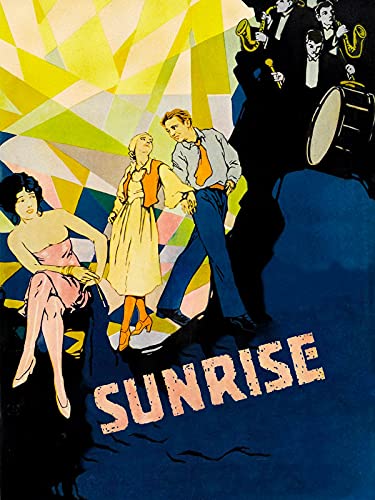
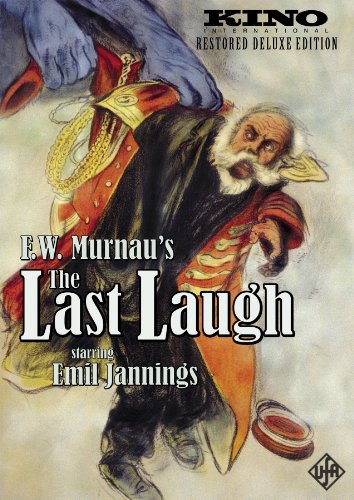
![Tabu: A Story of the South Seas (1931) ( Tabu ) [ NON-USA FORMAT, Blu-Ray, Reg.B Import - Spain ]](https://m.media-amazon.com/images/I/51qhh2ib9HL.jpg)

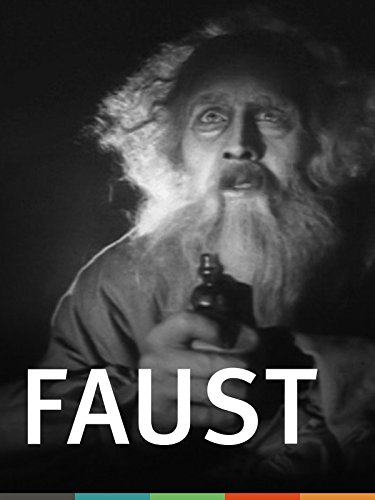

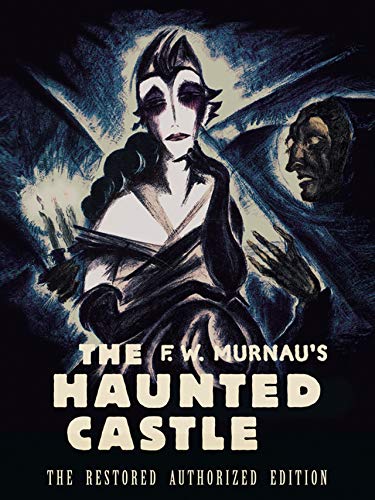
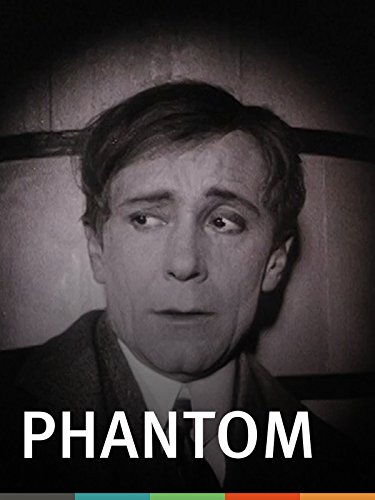
![City Girl [DVD] [1930] [Region 1] [US Import] [NTSC]](https://m.media-amazon.com/images/I/51Z9GOp1nbL.jpg)
